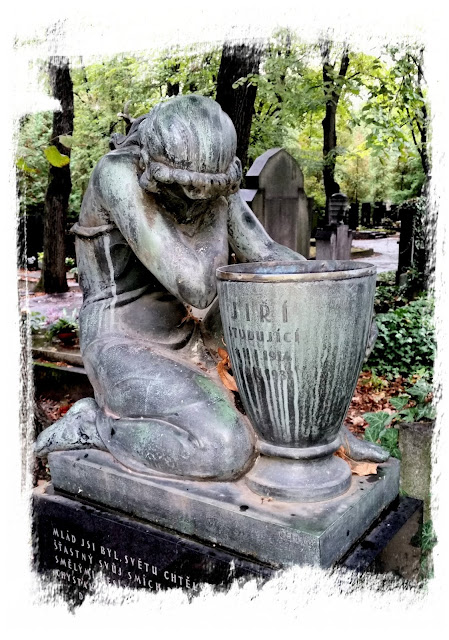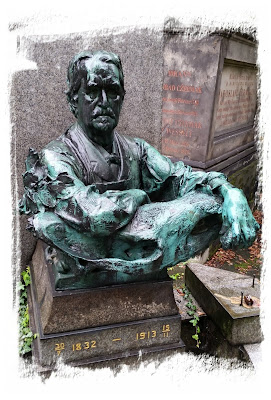These Cemeteries were created in 1680 to accommodate plague victims who were dying en masse and needed to be buried quickly. Later in 1787, when the plague again struck the city, Emperor Joseph II banned the burial of bodies within the city limits and Olsany Cemeteries were declared the central graveyards for hygiene reasons.
So on this cold grey wet Saturday morning I set off to explore and record my visit - and after a couple of damp hours, and feeling a bit spooked by the fact that I was the only living soul in the place - not even a stray cat or bird to be seen - here are but a few of the many wonderful memorials I came across during my wandering.
The Olsany necropolis consists of twelve cemeteries including an Orthodox and tiny Muslim section, a large Jewish section and military burial grounds. Among the thousands of military personnel buried here are Russian soldiers and officers from the Napoleonic wars, as well as Czech and Russian and Commonwealth soldiers who died for the freedom of Czechoslovakia in 1944 1945.
Crumbling and rusty vaults belonging to long forgotten families ...
Already the grounds are becoming carpeted with the autumnal litter ...
Avenues of grave sites - many overgrown with acres of ivy ...
To this day there is evidence here of as many as 230,000 people buried, 65,000 grave sites and 200 chapel sites and six columbariums ( storage sites of urns containing the ashes ).
And the broken-hearted dove has the last say ...
Then after three hours and still not covering the entire area, but with bones frozen and fingers blue, it was off to find the nearest warm cafe for much-needed caffeine and a good serving of Czech pork sausage to thaw out my arteries ...
The much warmer and very exciting National Art Galleries next up ...




















































No comments:
Post a Comment
Note: Only a member of this blog may post a comment.